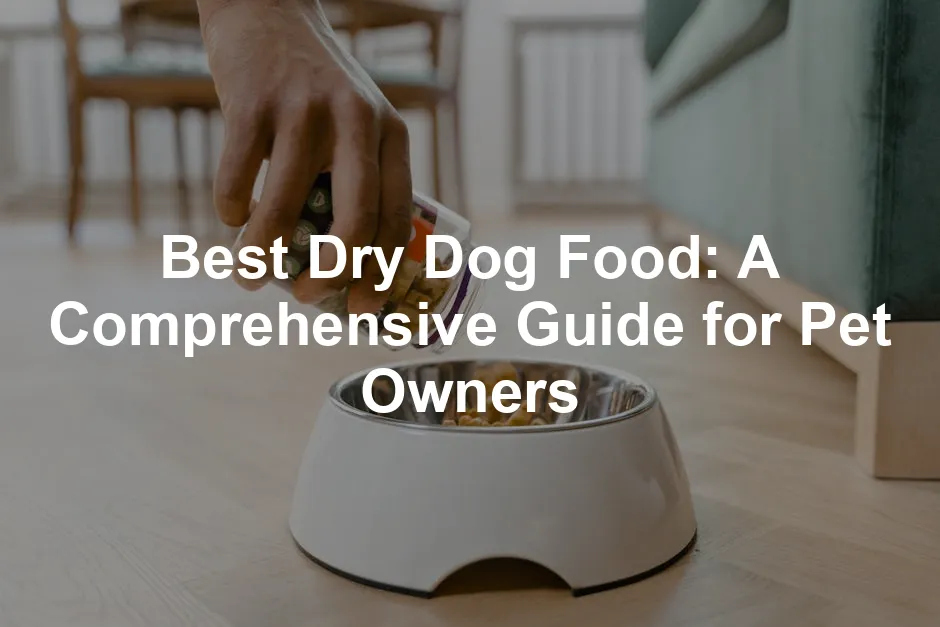Introduction
Choosing the right dry dog food is essential for your pet’s health. The right food influences your dog’s energy, coat condition, and overall happiness. This article focuses on helping you find the best dry dog food options available.

Finding the right dry dog food is crucial for your dog’s health and happiness. best dry dog food options can greatly influence your pet’s well-being.
Summary and Overview
In this guide, you’ll discover top product recommendations for dry dog food. We’ll highlight key features to consider, such as nutritional value and ingredient quality. You can expect comparisons among various brands tailored for different dog breeds and dietary needs.
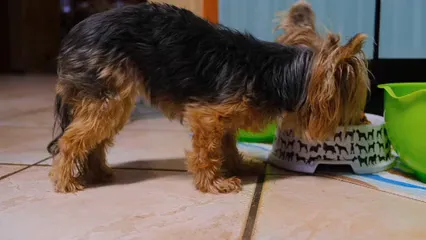
To determine the “best” dry dog food, we evaluate factors like nutritional balance, ingredient sourcing, and price. Whether you have a small, medium, or large breed, we aim to cover diverse dietary requirements. By the end, you’ll have a clearer understanding of what makes a high-quality dry dog food.
Speaking of high-quality, consider trying Blue Buffalo Life Protection Formula. This brand uses real meat as the first ingredient and ensures that your dog gets the nutrients they need without the fillers. Trust me, your pup will thank you with extra tail wags!
Types of Dry Dog Food
Kibble Varieties
When choosing dry dog food, understanding the types available is key. The most common option is standard kibble. This variety typically includes grains and meat. However, many pet owners now opt for grain-free options. These formulas often feature alternative carbohydrates like sweet potatoes or peas. High-protein formulas are also gaining popularity, especially among active breeds. They contain elevated meat content for energy and muscle maintenance.
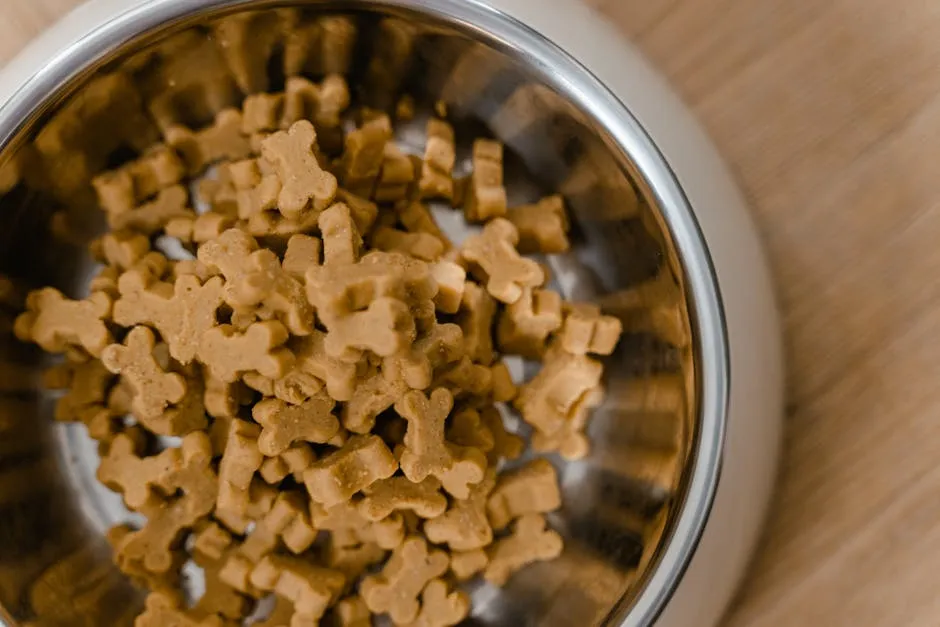
Another consideration is the difference between premium and budget-friendly brands. Premium brands often use high-quality ingredients and have strict sourcing guidelines. This can mean more protein and fewer fillers. On the other hand, budget-friendly options may include lower-quality ingredients, which can affect your dog’s health over time.
While we’re on the topic of premium options, you might want to check out Wellness Core Grain-Free. This formula is packed with protein and is perfect for those energetic pups who need an extra boost!
Market research shows a significant trend toward grain-free and high-protein diets. According to a recent survey, 42% of dog owners prefer grain-free products for their pets. This shift reflects growing awareness of dog nutrition.
To find the right fit for your furry friend, do your research. Look into specific brands that align with your dog’s needs and preferences.

Nutritional Breakdown of Dry Dog Food
Understanding Labels and Ingredients
Reading dog food labels can be tricky. However, it’s essential for your pet’s health. Start by checking the ingredient list. Look for high-quality protein sources, like chicken or beef. These should be the first ingredients. Avoid foods with vague terms like “meat by-products” or “animal meal.”

Next, pay attention to the guaranteed analysis. This section shows the minimum percentages of protein and fat. For instance, a good dry dog food should have at least 20% protein. But remember, the quality of protein matters too!
Speaking of quality, if you’re looking for a balanced option, Nutro Ultra Grain-Free could be a great choice. It’s formulated with a blend of high-quality proteins and nutrients that support a healthy lifestyle for your dog.
The nutritional adequacy statement is also crucial. This tells you if the food meets AAFCO standards. AAFCO stands for the Association of American Feed Control Officials. It ensures the food is complete and balanced for your dog’s life stage.
Misconceptions about dog food labeling are common. Many people think that if a label says “natural,” it’s automatically healthy. This isn’t always true. Natural ingredients can still be of low quality.

Statistics show that 60% of pet owners misinterpret dog food labels. They often confuse marketing terms with actual quality. This highlights the need for careful ingredient analysis.
So, take a moment to check the label of your current dog food. Is it up to standard? Knowing what goes into your dog’s food can make a big difference in their health and happiness.
Common Misconceptions About Dog Food
Myths vs. Facts
Many myths surround dry dog food. One popular belief is that grain-free diets are necessary for all dogs. However, this isn’t always the case. Most dogs can digest grains just fine. In fact, grains can provide essential nutrients and energy.
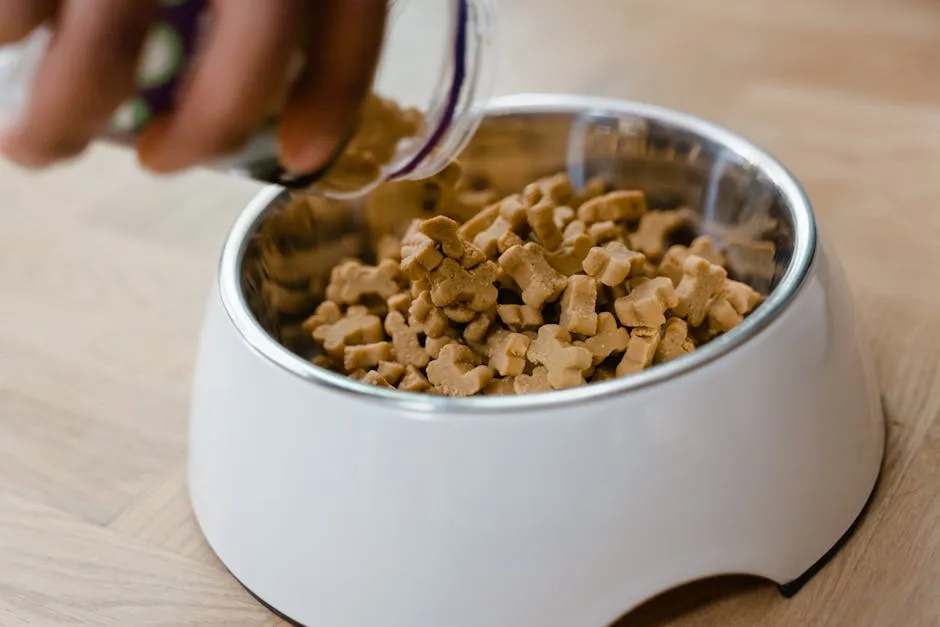
Another myth is that “human-grade” dog food is superior. While these foods might seem appealing, they often come with a hefty price tag. Sometimes, they don’t offer better nutrition than standard dog foods.
For a human-grade option that won’t break the bank, check out Freshpet Dog Food. It’s made with fresh, natural ingredients and is a great way to treat your pup to something special without compromising on nutrition!
Surveys show that 65% of pet owners believe grain-free diets are healthier. However, veterinarians often recommend a balanced diet that includes grains. This demonstrates the gap between owner beliefs and expert advice.
As a pet owner, it’s vital to separate myths from facts. What experiences have you had with dog food? Share your thoughts in the comments!

Health Implications of Poor Nutrition
Consequences of Low-Quality Food
Feeding your dog low-quality food can lead to serious health issues. One common problem is obesity. When dogs consume more calories than they burn, they gain weight. This can cause diabetes, joint pain, and heart disease. In fact, studies show that over 50% of dogs in the U.S. are overweight.

Another concern is skin allergies. Low-quality food often contains fillers and artificial ingredients. These can trigger allergic reactions, resulting in itching, redness, and discomfort. Dogs may also suffer from digestive problems. Ingredients like low-quality grains or excess fillers can lead to vomiting and diarrhea.
It’s important to be aware of the impact of poor nutrition on your dog’s health, including potential skin allergies. How to recognize and treat common skin allergies in dogs can provide valuable insights.
Long-term exposure to poor nutrition can be detrimental. Many dogs develop chronic issues that affect their quality of life. For instance, inadequate nutrition can weaken the immune system. This makes them more susceptible to infections and diseases.
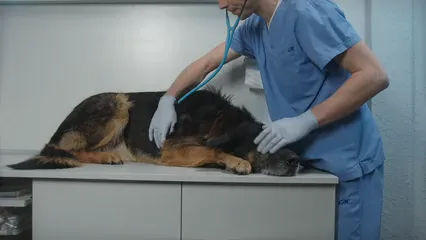
Veterinary studies emphasize the importance of quality nutrition. A well-balanced diet not only supports a healthy weight but also promotes overall well-being. Investing in high-quality dog food can prevent these health problems and improve your dog’s longevity. Consider trying Orijen Dog Food, which is known for its high protein content and premium ingredients!
If you notice any health issues in your furry friend, consult a veterinarian. They can help identify the root causes and recommend suitable food options for your dog’s needs.

Transitioning to New Dog Food
How to Switch Safely
Switching your dog’s food requires careful planning. Start by gradually mixing the old food with the new one. Begin with a small amount of new food, about 25%, and mix it in with 75% of the old food. Over the next week, slowly increase the new food’s proportion.

It’s essential to monitor your dog during this transition. Watch for any adverse reactions, such as vomiting or diarrhea. If you notice any issues, slow down the transition or consult your vet.
Veterinary professionals often recommend this gradual approach. It minimizes the risk of digestive upset and helps your dog adjust to new flavors and textures.
For a smooth transition, consider using PetFusion Pet Food Container. It keeps your dog’s food fresh and free from pests, ensuring they get the best out of their new diet!
Keeping a record of your dog’s response can be beneficial. Note any changes in appetite, energy levels, or stool consistency. This information can help you make informed decisions about their dietary needs.
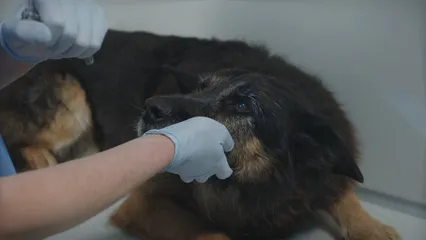
By following these steps, you ensure a smooth transition to a healthier diet for your furry companion.
Conclusion
Choosing high-quality dry dog food is crucial for your pet’s health. The right nutrition plays a vital role in their overall well-being. It helps support their energy levels, skin condition, and even their mood. A well-balanced diet can prevent common health issues and promote longevity.
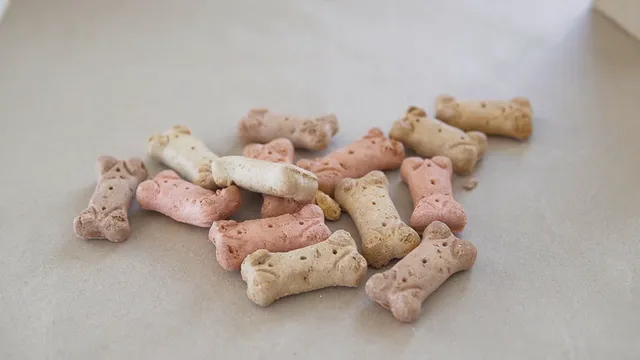
Take the time to research the best options available. Every dog has unique needs based on age, size, and activity level. Finding the right food tailored to your furry friend’s requirements can enhance their quality of life. Remember, your dog’s happiness begins with what’s in their bowl!
FAQs
What should I look for in high-quality dry dog food?
High-quality dog food should have a clear ingredient list. Look for real meat as the first ingredient. Avoid foods with fillers like corn or soy. Nutritional value is key, so check for a good protein percentage. Also, consider added vitamins and minerals for overall health.
Can I feed my dog just dry food?
Yes, you can feed your dog dry food only. However, ensure it’s a balanced diet for dogs. Many high-quality dry foods provide the necessary nutrients. Some dogs may benefit from a mix of wet and dry food for variety.
How do I know if my dog is allergic to their food?
Dog food allergies can manifest as itching, gastrointestinal issues, or skin problems. Common symptoms include excessive scratching, ear infections, or vomiting. If you suspect allergies, consult your vet for guidance on food trials and potential allergens.
Is grain-free dog food necessary?
Grain-free dog food isn’t necessary for all dogs. Many dogs digest grains without issues. Grains can provide essential nutrients and energy. Consult your vet to determine if a grain-free diet is suitable for your dog’s specific health needs.
How often should I change my dog’s food?
Changing dog food should be done gradually. You might consider switching every few months to keep their diet varied. However, if your dog thrives on a specific food, there’s no need to change frequently. Always monitor their health and consult your vet if you have concerns.
Please let us know what you think about our content by leaving a comment down below!
Thank you for reading till here 🙂
All images from Pexels

